GUIDE
In the digital age, where content reigns supreme, organisations face an ever-growing challenge: managing vast amounts of digital assets efficiently. Enter the AI-first Digital Asset Management (DAM) system, a revolutionary approach that promises to transform how businesses handle their digital resources. Embracing artificial intelligence within your DAM strategy not only streamlines operations but also unlocks new potentials for creativity and innovation.
Imagine a system that not only stores your digital assets but also understands them. With AI at the helm, your DAM can automatically tag images, classify documents, and even predict which assets might perform best for upcoming campaigns. This leap in capability allows teams to focus on strategic initiatives rather than mundane organisational tasks. The result is a more agile, responsive, and creative enterprise.
The journey to implementing an AI-first DAM system is not without its challenges. It requires careful planning, robust infrastructure, and a clear understanding of your organisation's specific needs. However, the rewards of this investment are immense. Businesses can achieve faster go-to-market times, improved resource allocation, and enhanced user experiences. Furthermore, by leveraging AI, companies can gain insights that were previously unimaginable, driving smarter decision-making across the board.
Consider the possibilities: automated workflows that adapt to your business processes, advanced analytics providing deeper insights into asset performance, and intelligent search capabilities that make finding the right asset as simple as asking a question. An AI-first DAM system is not just a tool; it is a strategic asset that can propel your organisation into the future of digital asset management.
Ready to explore the transformative power of AI in your DAM strategy? Read on to discover how to implement an AI-first DAM system that aligns with your organisational goals and positions you for success in the digital economy.
Introduction
In the digital age, where content reigns supreme, organisations face an ever-growing challenge: managing vast amounts of digital assets efficiently. Enter the AI-first Digital Asset Management (DAM) system, a revolutionary approach that promises to transform how businesses handle their digital resources. Embracing artificial intelligence within your DAM strategy not only streamlines operations but also unlocks new potentials for creativity and innovation.
Imagine a system that not only stores your digital assets but also understands them. With AI at the helm, your DAM can automatically tag images, classify documents, and even predict which assets might perform best for upcoming campaigns. This leap in capability allows teams to focus on strategic initiatives rather than mundane organisational tasks. The result is a more agile, responsive, and creative enterprise.
The journey to implementing an AI-first DAM system is not without its challenges. It requires careful planning, robust infrastructure, and a clear understanding of your organisation's specific needs. However, the rewards of this investment are immense. Businesses can achieve faster go-to-market times, improved resource allocation, and enhanced user experiences. Furthermore, by leveraging AI, companies can gain insights that were previously unimaginable, driving smarter decision-making across the board.
Consider the possibilities: automated workflows that adapt to your business processes, advanced analytics providing deeper insights into asset performance, and intelligent search capabilities that make finding the right asset as simple as asking a question. An AI-first DAM system is not just a tool; it is a strategic asset that can propel your organisation into the future of digital asset management.
Ready to explore the transformative power of AI in your DAM strategy? Read on to discover how to implement an AI-first DAM system that aligns with your organisational goals and positions you for success in the digital economy.
Navigation
Steps to Follow
ONE
Actionable Steps
Examples
Best Practices
TWO
Actionable Steps
Examples
Best Practices
THREE
Actionable Steps
Examples
Best Practices
Common Mistakes to Avoid
Implementing an AI-first Digital Asset Management (DAM) system offers numerous advantages, yet it is not without its pitfalls. Organisations often rush into deployment without comprehensive planning, leading to several common mistakes that can undermine the system's effectiveness.
One frequent error is underestimating the importance of data quality. AI systems thrive on clean, well-organised data. When data is inconsistent or poorly labelled, the system struggles to deliver accurate results. Imagine an advertising agency with thousands of images lacking consistent metadata. Without proper tagging, an AI system might miscategorise a winter campaign image as suitable for a summer project, leading to inefficient retrieval. Organisations should prioritise data hygiene by conducting thorough audits and implementing strict metadata standards before integrating assets into the DAM system.
Another common mistake is neglecting user training. AI-first DAM systems often introduce new functionalities and workflows that users must understand to fully utilise. Without proper training, users may become frustrated or revert to outdated processes, reducing overall system adoption. For example, a publisher introducing an AI-driven categorisation tool could see editors continue manual tagging, negating time-saving benefits. Organisations should invest in comprehensive training sessions, including hands-on workshops and detailed user manuals, ensuring all stakeholders are comfortable navigating the new system.
Failure to define clear objectives is also a significant misstep. Many organisations implement AI-first DAM systems without a clear understanding of what they want to achieve. This lack of direction can lead to wasted resources and missed opportunities. An e-commerce company, for instance, might aim to enhance customer experience by improving search accuracy. Without specific goals, efforts could become diluted. Before implementation, organisations should establish measurable objectives, such as reducing asset retrieval time by 30% or automating 50% of categorisation tasks, to guide their efforts.
Overlooking the need for ongoing maintenance is another trap. AI systems require regular updates and adjustments to remain effective. Organisations often implement the system and assume it will continue to function optimally without intervention. Yet, without continuous monitoring and fine-tuning, the system's performance may degrade over time. Consider a museum digitalising its archives; without updates, AI might not recognise newer content types or improve on identification accuracy. Establishing a schedule for regular updates and reviews, potentially monthly or quarterly, helps maintain the system's effectiveness.
In some cases, organisations may over-rely on AI without human oversight. While AI can significantly enhance efficiency, it is not infallible. AI might misinterpret nuances, like incorrectly tagging culturally sensitive content. Human oversight remains crucial in ensuring the system's outputs align with organisational goals and values. Organisations should establish protocols for human review of AI-generated results, possibly through routine audits or dedicated review teams, to maintain quality assurance.
Lastly, ignoring stakeholder input during the implementation process can be detrimental. A successful AI-first DAM system should meet the needs of all users. By involving stakeholders from various departments, such as marketing, IT, and design, during the planning phase, organisations can ensure the system addresses their specific requirements. This collaborative approach not only tailors the solution more effectively but also enhances buy-in and utilisation across the board. For instance, involving a graphic design team might highlight the need for enhanced image recognition features, which could otherwise be overlooked.
By recognising and addressing these common mistakes, organisations can more effectively leverage AI-first DAM systems. This proactive approach ensures the system delivers its full potential, aligns with organisational objectives, and enhances asset management capabilities.
Implementing an AI-first Digital Asset Management (DAM) system represents a significant step forward for any organisation seeking to optimise its digital asset workflows. This transition is not merely about adopting new technology; it is about transforming how your organisation manages, utilises, and extracts value from its digital content.
An AI-first DAM system offers numerous advantages, including enhanced metadata tagging, improved search capabilities, and predictive analytics for asset utilisation. These features can significantly reduce the time spent on manual tasks, allowing your team to focus on more strategic activities. However, successful implementation requires careful planning and consideration.
Firstly, assess your current DAM needs and future objectives. Aligning the AI capabilities with your organisational goals ensures that the system supports your broader strategy. Engage stakeholders across departments to understand their requirements and challenges. This input is vital for configuring an AI-first DAM system that serves the entire organisation effectively.
Training and change management are crucial components of implementation. Equip your team with the necessary skills to leverage AI tools effectively. This might involve workshops or tailored training sessions to ensure everyone understands how to interact with the new system. Furthermore, fostering a culture that embraces innovation can ease the transition and encourage user adoption.
Regular evaluation and refinement of your DAM strategy will ensure sustained success. Monitor system performance and user feedback to identify areas for improvement. AI technology evolves rapidly, and staying informed about new developments will allow you to enhance your system continually.
In summary, adopting an AI-first DAM system requires a strategic approach, clear communication, and ongoing commitment. By addressing these key areas, organisations can unlock the full potential of their digital assets, driving efficiency and innovation. The journey may be complex, but the rewards in agility, productivity, and insights are well worth the effort.
Faq
Frequently Asked Questions
A: An AI First DAM system leverages artificial intelligence to enhance the organisation, management, and retrieval of digital assets. By incorporating AI, such systems automate metadata tagging, improve search accuracy, and facilitate efficient content distribution. The AI component enables the DAM to learn from user interactions, thereby refining processes over time.
A: AI enhances metadata tagging by automatically analysing and categorising digital assets based on their content. It can identify objects, text, and even sentiment within images or videos. This automation reduces the manual effort required from users and increases the accuracy and consistency of metadata, making assets easier to find and utilise.
A: When implementing an AI First DAM system, consider factors such as data privacy, integration with existing workflows, and scalability. Ensuring compliance with data protection regulations is crucial, especially when handling sensitive information. Additionally, the system should seamlessly integrate with current tools and processes to avoid disruptions. Lastly, it must scale with your organisation's growth to accommodate increasing volumes of digital assets.
DAM Guides
Click here to explore our in-depth Guides—step-by-step walkthroughs designed to help you master DAM, AI, integrations, and workflow optimization.
DAM Articles
Click here to dive into our latest Articles—insightful reads that unpack trends, strategies, and real-world applications across the digital asset world.
Take me to Articles
DAM Resources
Click here to access our practical Resources—including tools, checklists, and templates you can put to work immediately in your DAM practice.
Take me to Resources




